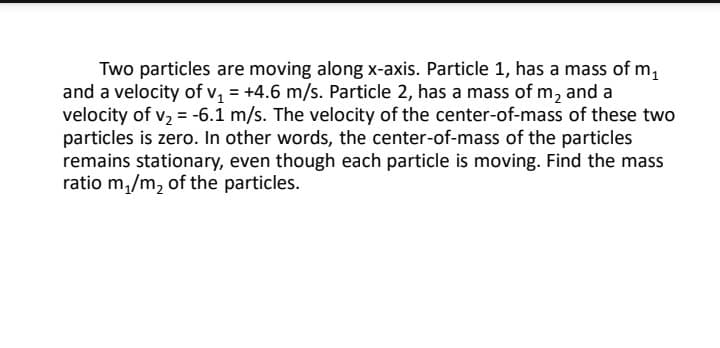Two particles are moving along x-axis. Particle 1, has a mass of m, and a velocity of v, = +4.6 m/s. Particle 2, has a mass of m, and a velocity of v2 = -6.1 m/s. The velocity of the center-of-mass of these two particles is zero. In other words, the center-of-mass of the particles remains stationary, even though each particle is moving. Find the mass ratio m,/m, of the particles.
Two particles are moving along x-axis. Particle 1, has a mass of m, and a velocity of v, = +4.6 m/s. Particle 2, has a mass of m, and a velocity of v2 = -6.1 m/s. The velocity of the center-of-mass of these two particles is zero. In other words, the center-of-mass of the particles remains stationary, even though each particle is moving. Find the mass ratio m,/m, of the particles.
Related questions
Question

Transcribed Image Text:Two particles are moving along x-axis. Particle 1, has a mass of m,
and a velocity of v = +4.6 m/s. Particle 2, has a mass of m, and a
velocity of v, = -6.1 m/s. The velocity of the center-of-mass of these two
particles is zero. In other words, the center-of-mass of the particles
remains stationary, even though each particle is moving. Find the mass
ratio m,/m, of the particles.
Expert Solution
This question has been solved!
Explore an expertly crafted, step-by-step solution for a thorough understanding of key concepts.
This is a popular solution!
Trending now
This is a popular solution!
Step by step
Solved in 2 steps
